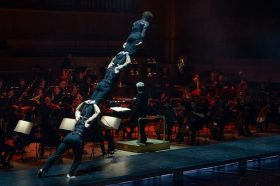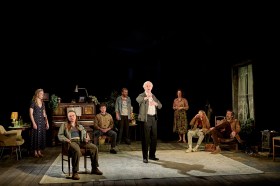Young at Tate: Image: Tate Collectives
Engaging with young people is the holy grail for many an arts organisation, not only to expand current audiences but also increasing the vitality of arts organisations and providing a sense of succession and a guarantee of future audiences.
Tate, which runs four galleries across Britain, has been noticeably successful in getting young people inside its doors.
But in a session at the Communicating the Museum Conference in Sydney last week, Sabine Doolin, Audience Research & Insight Manager at Tate, warned bringing young people into an established arts organisation involves a major shift in every aspect of organisational functioning, from communication style to furniture, programming to front-of-house.
Doolin said arts organisations were right to want young audiences because they were key to diverse future audiences. ‘There is a lot of research showing if you engage with arts at a young age you will continue to do so, and that is independent of ethnicity or class. Those things come in later and if you get people at a young age you can do something about those other issues later.’
But she said young people need to be brought in on their own terms – and that is not always compatible with the way organisations such as museums are used to operating. She identifies collaboration, participation and immersion as key drivers for young audiences.
Young people like environments with music or soundscapes and a higher level of ambient noise than is customary in traditionally quiet galleries. They want to sprawl on floors, be playful, laugh loudly and take lots of selfies. They need to be allowed – indeed encouraged – to use their phones and social media while in an arts space, albeit on silent. Telling them to put away phones and keep their voices down is akin to telling them to go somewhere else.
‘We need to give young people a sense of agency and ownership,’ said Doolin. That means arts organisations need to be ready to cede control to young visitors in a way they are not expected to do with mature audiences or families.
One solution is to form reference groups of young people and implement their suggestions. Tate Collective offers young people a chance to work collaboratively with artists on programs which appeal to their demographic. They created a salon style wall called Source based on the design you might see on Tumblr or Flickr. The room included low lighting, sofas, a social space and soundscapes that appealed to young people. ‘It was important to us to make everyone who comes to see Source feel involved, and like they are part of the gallery space … Visitors can sit on the sofas, chill out, and create their own soundscape,’ Tate Collective members Leyla, Verity and Harriet explained.
Tate Collective also established a room simply called ‘The Space’ where young people could go to hang out and socialise without feeling they needed to participate in a specific activity. Doolin said The Space was embraced by young people as making them feel more comfortable and stay longer at the gallery. But it was difficult to keep the space for the intended demographic. ‘Families loved it and that didn’t go down too well with the 15 to 25s,’ said Doolin.
Events are a great way to bring new audiences into a museum or gallery, often providing music, social opportunities and immersive activities. But Doolin warned it can be difficult to make the link from attending a gig to the core activities of an arts organisation. Surveying young people who had attended gigs at Tate she found some did not even recognise they had been at Tate.
Follow through is important as young people are notoriously fickle audiences, slow to commit and unwilling to form habitual attachments. Social media can be valuable in maintaining a relationship but be ready to rejig your respectable, sophisticated branding with something more playful, humourous and intimate. ‘It can be hard to make the link between that tone and the rest of the organisation,’ said Doolin.
Young audiences also make different demands on organisations: they want later hours and more alcohol; they move in larger packs and make more noise. Running a successful gig, a museum can find itself needing to employ crowd management techniques that are not in their usual repertoire.
Work out a way to do all this without alienating your traditional audience, and you are ready for young people.



_Encounters-in-Reflection_Gallery3BPhoto-by-Anpis-Wang-e1745414770771.jpg?w=280)

